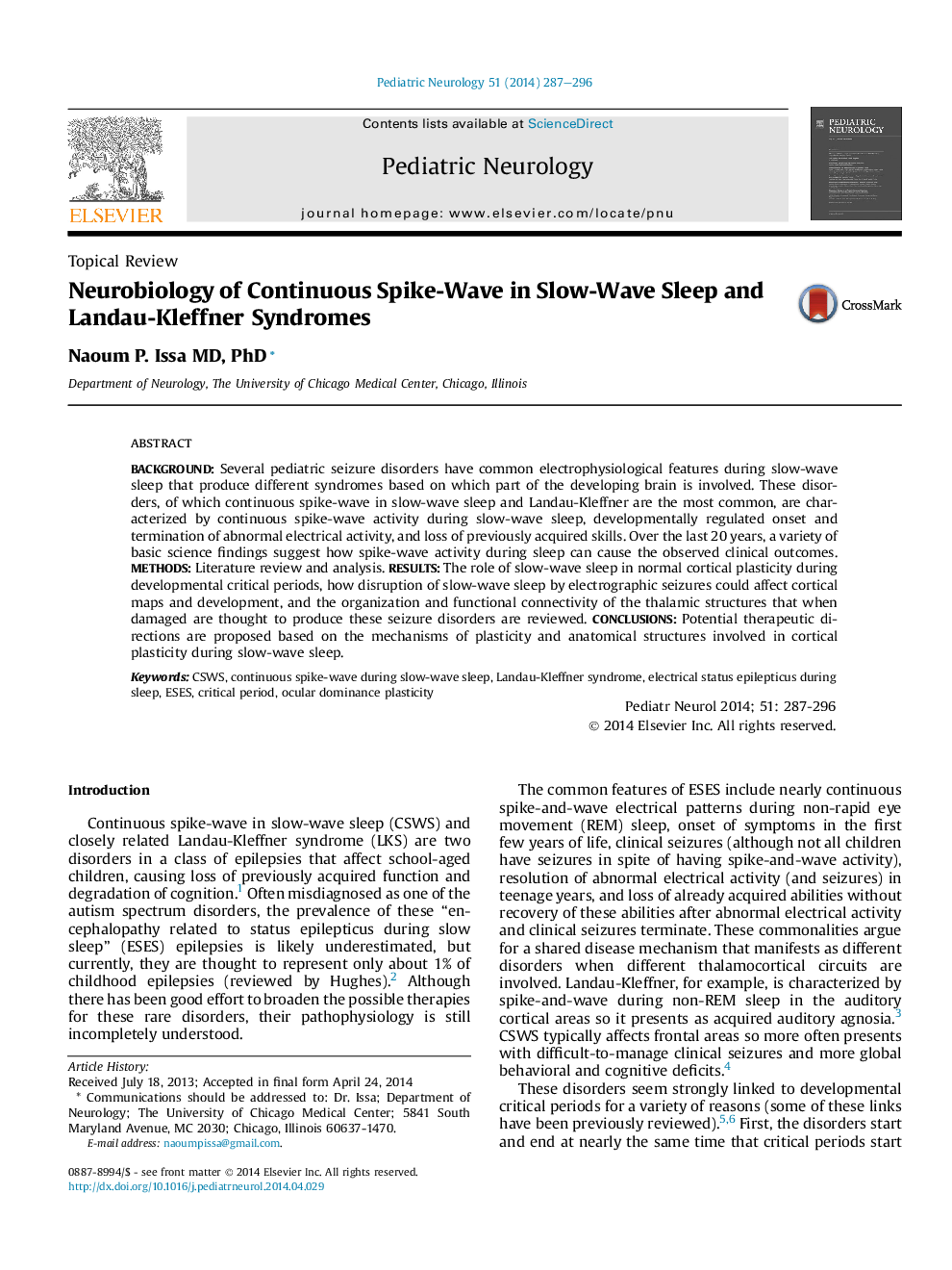| Article ID | Journal | Published Year | Pages | File Type |
|---|---|---|---|---|
| 3084612 | Pediatric Neurology | 2014 | 10 Pages |
BackgroundSeveral pediatric seizure disorders have common electrophysiological features during slow-wave sleep that produce different syndromes based on which part of the developing brain is involved. These disorders, of which continuous spike-wave in slow-wave sleep and Landau-Kleffner are the most common, are characterized by continuous spike-wave activity during slow-wave sleep, developmentally regulated onset and termination of abnormal electrical activity, and loss of previously acquired skills. Over the last 20 years, a variety of basic science findings suggest how spike-wave activity during sleep can cause the observed clinical outcomes.MethodsLiterature review and analysis.ResultsThe role of slow-wave sleep in normal cortical plasticity during developmental critical periods, how disruption of slow-wave sleep by electrographic seizures could affect cortical maps and development, and the organization and functional connectivity of the thalamic structures that when damaged are thought to produce these seizure disorders are reviewed.ConclusionsPotential therapeutic directions are proposed based on the mechanisms of plasticity and anatomical structures involved in cortical plasticity during slow-wave sleep.
